Maturín, 3/10/2019
Aliendres, A.
Greetings dear readers.
𝐓𝐡𝐞 𝐧𝐞𝐱𝐭 𝐩𝐨𝐬𝐭 𝐢𝐬 𝐭𝐡𝐞 𝐭𝐫𝐚𝐧𝐬𝐥𝐚𝐭𝐢𝐨𝐧 𝐨𝐟 𝐭𝐡𝐞 𝐨𝐫𝐢𝐠𝐢𝐧𝐚𝐥 𝐜𝐨𝐧𝐭𝐞𝐧𝐭 𝐢𝐭𝐬𝐞𝐥𝐟.
𝑰𝒏𝒕𝒓𝒐𝒅𝒖𝒄𝒕𝒊𝒐𝒏
When speaking of the origin, evolution and influence of the horse in human civilization, one cannot underestimate the mythological contributions that, being sprinkled with fantasy, some classical works record and others literary and cinematographic ones reproduce them. However, my interest is to signify the evolutionary, biogenetic, ethological, ecological and sociocultural aspects that tell the development of human civilization with the equine accompaniment; although by its amplitude in this part I introduce a synthesis that deals with mythological, literary, historiographical aspects and then fall into the scientific aspects. Let's get down to our own business.
𝑴𝒚𝒕𝒉𝒐𝒍𝒐𝒈𝒊𝒄𝒂𝒍 𝒂𝒏𝒅 𝒍𝒊𝒕𝒆𝒓𝒂𝒓𝒚 𝒄𝒐𝒏𝒕𝒆𝒙𝒕
From the mythological point of view, the first equine that existed was Pegasus. There are several versions of its origin, many classical authors had some inclination that this winged quadruped was born at the time Perseus (son of Zeus) decapitated the Gorgon Medusa and the blood comes into contact with oceanic waters, hence Poseidon is considered Pegasus' father.
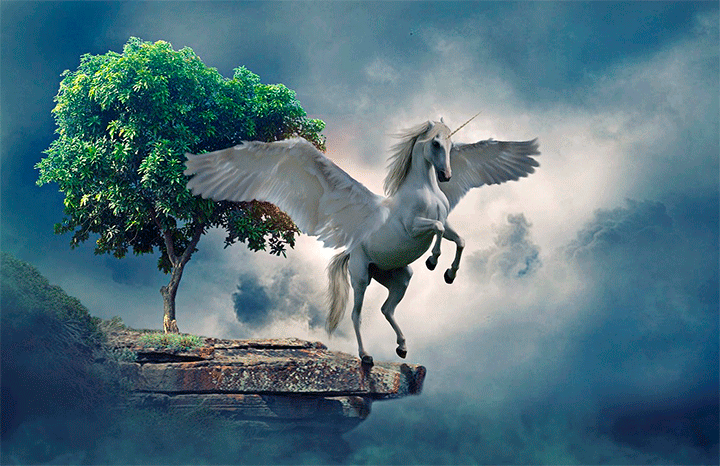
Among his exploits, his war campaign with Bellerophon stands out, this hero of Greek mythology rides on Pegasus' back and kills Chimera, a terrifying creature with multiple heads. Bellerophon inspired by triumph and with the taste of victory in his sword, attacks and bend the legendary Amazon. Now, leaving the mythological environment to step on the sands of literature, his greatest figure Miguel de Cervantes Saavedra gives life to the famous Rocinante, faithful friend and transporter of the ingenious nobleman.
𝑯𝒊𝒔𝒕𝒐𝒓𝒊𝒐𝒈𝒓𝒂𝒑𝒉𝒊𝒄 𝒆𝒍𝒆𝒎𝒆𝒏𝒕𝒔
However, my favourite historical character is Alexander the Great, who needs no introduction. In his early adolescence he was able to ridicule the best Macedonian horse tamers when he managed to ride the indomitable steed that his father Philip II had bought for 13 talents, well deserves to digress here.
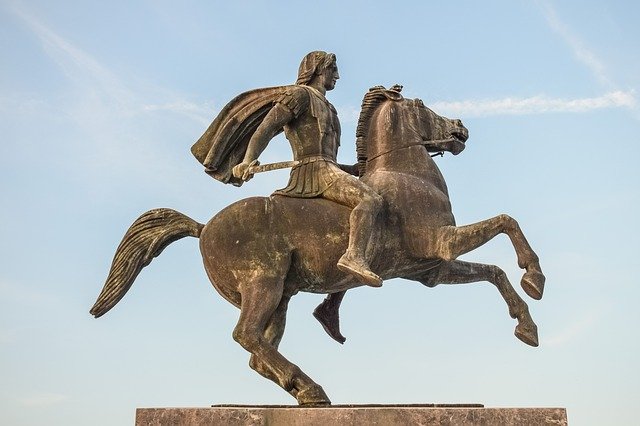
In ancient Greece a talent was a unit of monetary measure whose approximate value was 26 kilos and the coined exchange ore was silver (Ag47); meanwhile, it was a fortune for the time and a millionaire sum ($) at present, 338 kilos of silver cost Bucephalus, the legendary horse who acted as a vehicle for Alexander the Great and a seat to write the history of the greatest conqueror of all times.
𝑭𝒂𝒎𝒐𝒖𝒔 𝒇𝒐𝒓 𝒕𝒉𝒆𝒊𝒓 𝒎𝒂𝒔𝒕𝒆𝒓𝒔 𝒂𝒏𝒅 𝒆𝒙𝒑𝒍𝒐𝒊𝒕𝒔
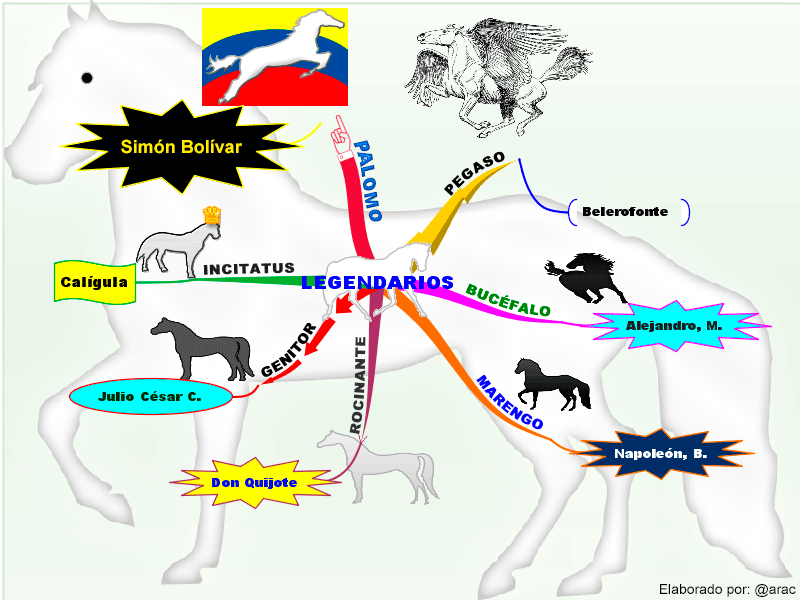
These fascinating historiographic elements are the essence of today's society. All these noble animals have taken place in the scrolls of history; none more relevant than another, simply moments and feats at different times. If Greece was the cradle of gods, mythology and knowledge, Rome would not be left behind.
Emperor Caligula would have his thoroughbred of Hispanic origin occupy many papyrus where his insane occurrences were written; there is not enough documentary record to affirm that the appointment of Incitatus as Consul or Senator was consummated; however, historians of the time do maintain that from a marble stable to fine vestments and a high society wife came to have this swift horse, who only lost one career in her pleasant life.
Gaius Julius Caesar, Genitor's friend and rider, rode and subdued the descendants of the protohistoric peoples of the Celts in Gaul, a region of Western Europe (Belgium, France, Germany, Italy...); this before meeting Cleopatra, who presents him with a spirited Arabian mare; by vestiges of epitaphs recovered in the city of Cordoba (Spain) it is presumed that Julius Caesar baptized her as Spalis.
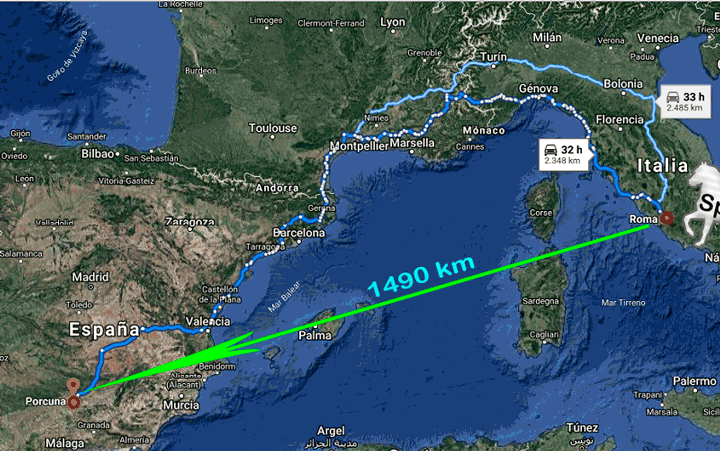 Information retrieved fromGoogle Maps Animation design: @arac.
Information retrieved fromGoogle Maps Animation design: @arac. The whip and the genetic quality could have influenced this noble mare to make a time of 17 days in her journey Rome - Spain, specifically to the municipal settlement of Porcuna in the province of Jaen. Bearing in mind that the current road and transport infrastructure did not exist, but was a journey of more than 2400 kilometers (km), so the blood traction vehicle made its way through the rugged relief characteristic of the prominent mountain ranges, thick vegetation in the foothills and alpine Pyrenees, with hydrometeorological variations among other natural barriers hostile to the mare and her rider.
The liberator Simón Bolívar, who was greatly influenced by Greek and Roman social and military culture, traveled thousands of kilometers on the back of Palomo; rivers, valleys, savannas and the marvelous but rugged mountain ranges of the Andes polished Palomo's horseshoe. Therefore, it is fascinating to know some historical aspects that horses have in the world; let's deepen a little about their origin and evolution from scientific sands.
𝑶𝒓𝒊𝒈𝒊𝒏 𝒂𝒏𝒅 𝒆𝒗𝒐𝒍𝒖𝒕𝒊𝒐𝒏 𝒐𝒇 𝒕𝒉𝒆 𝒉𝒐𝒓𝒔𝒆
To trace the appearance of the first ancestor of the horse, science has relied on interesting fossil records that allow us to reconstruct what biodiversity and the environment in general were like, after the massive extinction of the original biodiversity, caused by the suspension of millions of particles, ashes and soot that darkened the biosphere and prevented the penetration of sunlight to the earth to trigger an unprecedented environmental catastrophe. This is how the Cretaceous-Paleogene begins. However, in order to continue with the description, it is convenient to specify the characteristics of this living being on the zoological scale.
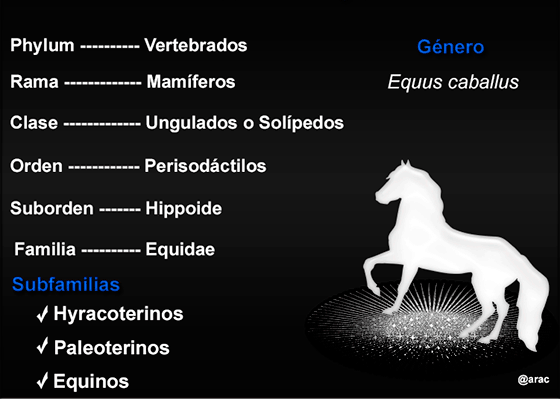
In fact, the genus Equus is not exclusively reserved for Equus caballus, but groups seven species in total, from which a zoological variety is derived: Asno, Hemiono, Hemipo, Cuaga, Onagro, Zebra and of course Horse which is the object of study.
𝑾𝒉𝒆𝒓𝒆 𝒂𝒏𝒅 𝒘𝒉𝒆𝒏 𝒕𝒉𝒆 𝒉𝒐𝒓𝒔𝒆 𝒐𝒓𝒊𝒈𝒊𝒏𝒂𝒕𝒆𝒅
From the geological temporal point of view, we situate ourselves in the Cenozoic era; it is precisely in this geobiological moment that a before and after is marked with respect to the animal and vegetable evolutionary process; some 10 years later.000 million years since the meteorite fell in the Yucatan Peninsula - Mexico, the rehabilitation of the ecosystem in order to settle the suspended geological material, allows the penetration of solar energy to the land and oceans, the air is heated again and new species appear, including the b>Eohippus, the oldest ancestor of the horse in his family tree.
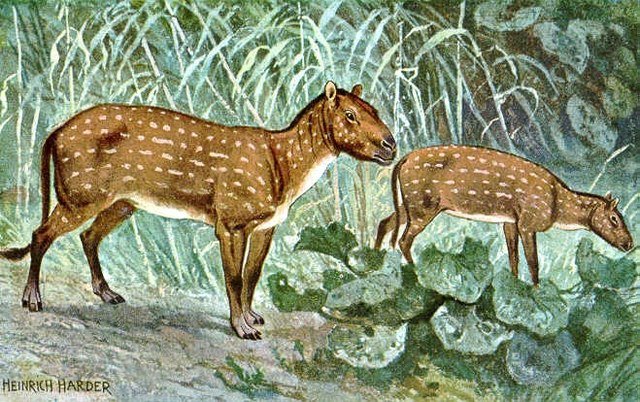 Image credits toHeinrich Harder (1858-1935) - The Wonderful Paleo Art of Heinrich Harder at wikimedia.org Public Domain.
Image credits toHeinrich Harder (1858-1935) - The Wonderful Paleo Art of Heinrich Harder at wikimedia.org Public Domain.The favorable climatic conditions in Asia and Europe propitiate gigantic herbaceous coverings and flora that represents the supply of the diet; at the same time, the glaciers are withdrawn and the continent is calling to repopulate the life. Thus the ancestors of the deer (large creatures) are giving ground to numerous herds of small horses that begin to gallop in the newest meadows. In this way, contingents of horses leave the Eurasian continent to colonize lands of the new world, this intrepid migratory event occurred through the Behring Strait.
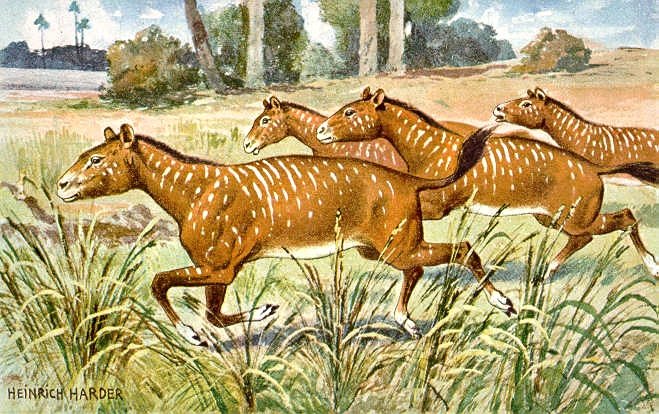 Image credits to Heinrich Harder (1858-1935) - The Wonderful Paleo Art of Heinrich Harder at wikimedia.org Public Domain.
Image credits to Heinrich Harder (1858-1935) - The Wonderful Paleo Art of Heinrich Harder at wikimedia.org Public Domain.At the dawn of the Oligocene the family of equids gave birth to another species, the Mesohippus would evolve on American soil, while their ancestor Eohippus began to experience extinction on the old continent. The Mesohippus gained more height, they developed their musco-skeletal structure to increase the speed of displacement, because of its food requirement it was located in dry tropical climate and in some places where the gallery forest predominates.
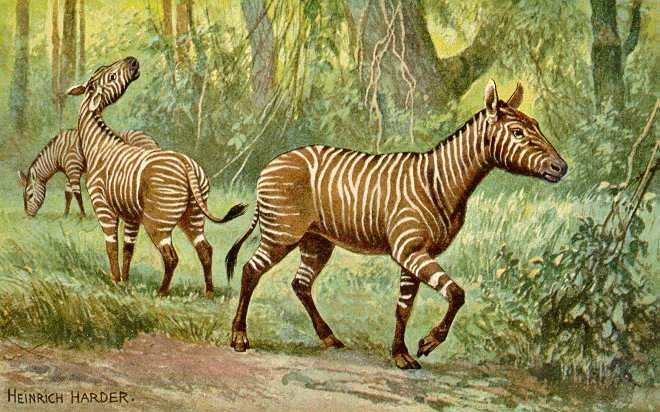 Image credits toHeinrich Harder (1858-1935) - The Wonderful Paleo Art of Heinrich Harder at wikimedia.org Public Domain.
Image credits toHeinrich Harder (1858-1935) - The Wonderful Paleo Art of Heinrich Harder at wikimedia.org Public Domain.The Hypohippus and Sinohippus are descendants of the Mesohippus, unlike the latter, reach the average size of a pony and after having populated North America return to Europe and Asia to disseminate as genetically more sturdy, robust and fast. The Hypohippus evolved a prominent denture that did not possess its predecessor, this uniqueness gave it an advantage to reach food and branches on which it fed.
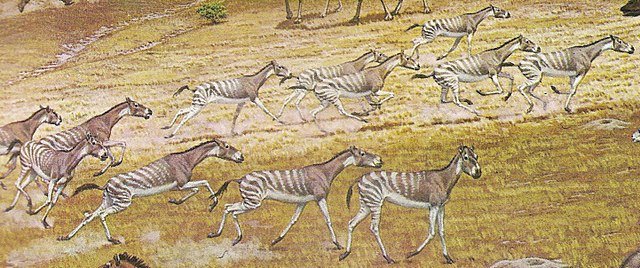
He lived about 5,000 million years ago, during the Pilocene in American lands, he is experiencing much more dynamic morpho-skeletal and physiological changes, reflects a certain intelligence and can be said to be the specimen all-terrain to fend for itself, from this derived the genetics of the modern horse.

From the process of Cenozoic environmental resilience we begin to experiment with the appearance of new animal species that survive, suffer changes in their structure and others that emerge from the same geoclimatic and pollution conditions to which the biosphere was subjected.
In this way the Eohippus appears, a creature of 35 centimeters of average height that according to the influence of the trophic chain begins to evolve to pass from its almost premature extinction, migration of region and dominant repopulation in North America to improve its biogenetics and to return to its place of origin, where it returns to colonize steppes and forests in development of its natural instinct. In short, this perisodactyl herbivore, which now has a large size, is a species that has meditated to improve its bioanatomy in general.
Finally, it is worth mentioning the creation of multimedia resources through the vectorization and design of didactic images as a pedagogical contribution to understand some phases of the process of appearance, evolution and characterization in the zoological scale of the horse, among other evolutionary components that are important pieces of the stages of adaptation and biological changes that shaped the physioanatomical and genetic structure of the modern horse Eqqus caballus.

Resources
- Adobe Photoshop cs6
- Adobe Illustrator cs6
- iMindMap v. 10 profesional
- Digital cartographic tool Google Maps
Procedures
- Adobe Illustrator cs6 and Adobe Photoshop cs6 were used for vector design and image animation.
- iMindMap v. 10 Pro. for the elaboration of a didactic resource (conceptual map).
- Google Maps to obtain a satellite image and estimate the geospatial distance of two specific points; a multimedia application was subsequently developed for better thematic understanding.

[ 1] Domesticación y origen de la doma y manejo del caballo
[ 2] El caballo: su origen, evolución y relaciones con el hombre
[ 3] Evolución del caballo: más de 55 millones de años
[ 4] Google Maps (herramienta digital cartográfica )
[ 5] Zootecnia equina: exterior y anatomía del caballo.

Manually Curated By Upmewhale Lets Join Our Discord!
What a beautiful and kind surprise. It fills me with joy to receive your valuable support; I had not received such a generous vote for months.
@upmewhale, Thank you so much for the valuable support
This post has been voted on by the SteemSTEM curation team
and voting trail. It is elligible for support from @curie and @minnowbooster.
If you appreciate the work we are doing, then consider supporting our witness @stem.witness. Additional witness support to the curie witness would be appreciated as well.
For additional information please join us on the SteemSTEM discord and to get to know the rest of the community!
Please consider using the steemstem.io app and/or including @steemstem in the list of beneficiaries of this post. This could yield a stronger support from SteemSTEM.
Thank you for supporting my publication. This reward commits me to raising my motivation for contributions to this great scientific community.
Greetings.
Congratulations @arac! You have completed the following achievement on the Steem blockchain and have been rewarded with new badge(s) :
You can view your badges on your Steem Board and compare to others on the Steem Ranking
If you no longer want to receive notifications, reply to this comment with the word
STOPVote for @Steemitboard as a witness to get one more award and increased upvotes!
Thank you for supporting my publication.